 Passover’s Message of Hope in the Aftermath of Oct. 7
Passover’s Message of Hope in the Aftermath of Oct. 7
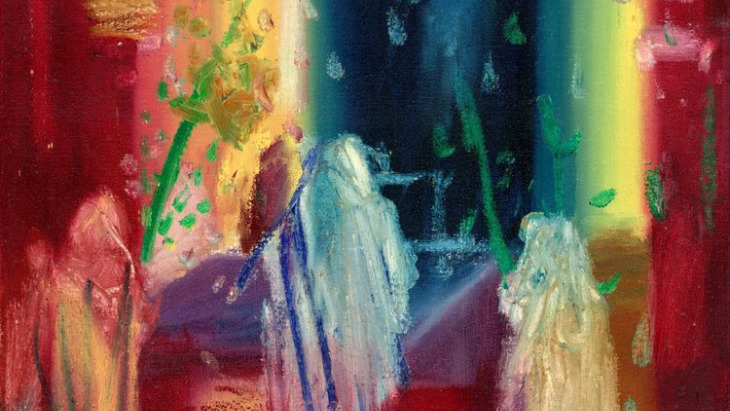

12 min read
Defining all the essential words and terms associated with the joyful holiday.
The Jewish holiday of Sukkot is full of beautiful customs and traditions – and a lot of strange terms for the uninitiated. Here’s a guide to some of the key words associated with this week-long festival.
A central commandment of the holiday of Sukkot is to spend time in temporary outdoor huts called sukkot:
You shall dwell in booths for a 7-day period; every native in Israel shall dwell in booths. So that your generations will know that I caused the Children of Israel to dwell in booths when I took them from the land of Egypt; I am Hashem, your God (Leviticus 23:42-43).
The Talmud notes that the original sukkot were the structures our ancestors lived in after leaving Egypt while they were wandering in the desert. The great sage Rabbi Eliezar taught that these original sukkot were composed not of earthly materials but of the otherworldly Clouds of Glory (Ananei Hakavod in Hebrew) which God sent to our ancestors to lead them on their way as they wandered through the desert, heading to the Land of Israel (Talmud Sukkot 11b).
While our sukkot are made of much more prosaic materials, they still remind us that we live in God’s loving embrace.
A willow branch that’s one of the four species used on Sukkot. (See Arba Minim below.)
A key mitzvot of Sukkot, the arba minim (literally, the Four Species) are four different types of plants that we bring together each Sukkot:
You shall take for yourselves…the fruit of a citron tree, the branches of date palms, myrtle branches, and willows of the brook, and you shall rejoice before Hashem, your God, for seven days (Leviticus 23:40).
Each morning, except for Shabbat, Jews take these four plants together in their hands and make a special blessing. (The three branches are placed together in one hand while the citron fruit is held in the other hand.) Holding these four types of plants together, we then wave them forward and backward, left and right, up and down, symbolizing the fact that God is all around.
The arba minim are widely known by their Hebrew names: Etrog (citron); Lulav (palm branch); Hadas (myrtle branch); and Aravah (willow branch).
Each plant in the arba minim is laden with symbolism. Many note that the shape of an Etrog resembles a heart, the shape of a Lulav is like a straight spine, the shape of leaves on the Hadas looks like eyes, and the leaves on the Aravah recall the shape of a mouth. Together, these four plants remind us that we bring our whole selves to perform this mitzvah on Sukkot.
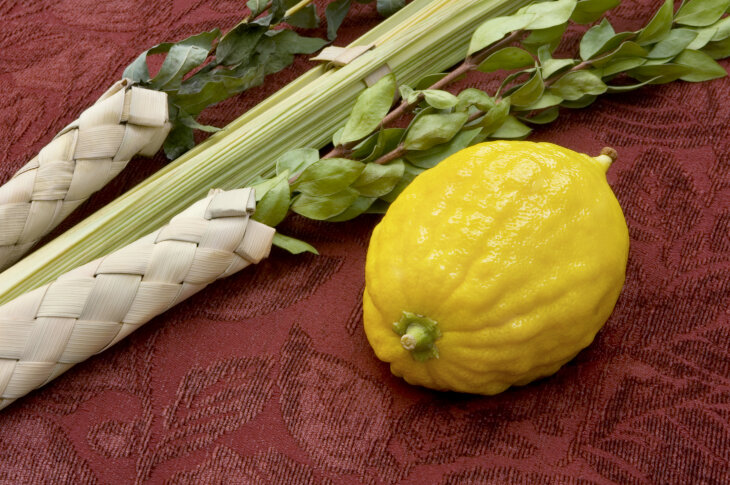
The Etrog has a beautiful, lemony smell, and if it’s grown privately (without the many pesticides that commercial etrog farms often employ) it has a beautiful taste as well. It’s likened to a person who learns much Torah and does many good deeds.
Lulav plants produce delicious dates, but have no smell: the lulav is likened to a person who studies Torah but doesn’t do any good deeds.
A Hadas smells fresh and wonderful, but myrtle plants produce no fruit: they are likened to a person who does good deeds but without any knowledge of Torah.
The Aravah has neither smell nor taste: it’s likened to a Jew who has neither Torah learning nor good deeds.
Despite their different roles, these four plants must be brought together to perform the mitzvah of shaking the lulav. If even one is left out, one doesn’t fulfill the mitzvah. It’s similar to the Jewish people: no matter what our level of knowledge or observance, we’re all one people.
Chag means holiday in Hebrew. Sameach means happy. It’s common to wish people Chag Sameach on all Jewish holidays, and on Sukkot it’s particularly apt. The Torah uses the word joy (simcha) more in connection with Sukkot than with other holidays. The prayers refer to the holiday as “zman simchateinu – the time of our joy”.
Sukkot comes at the start of the rainy season in Israel, and since ancient times it’s been associated with water. When the ancient Jewish Temples stood in Jerusalem, Jews would come to Jerusalem from all over the Land of Israel on Sukkot. Each night of the holiday people sang and danced from the Temple to the spring of Shiloach nearby, where they would draw pitchers of cold, clear water and bring them back to the Temple. There was music and rejoicing. The Talmud declares that “One who did not see the Celebration of the Place of the Drawing of the Water never saw celebration in his days” (Mishna Sukkah 5:1).
In the land of Israel, Sukkot is seven days long; outside of Israel, it’s celebrated for eight days. (The holiday of Simchat Torah adds an eighth day of celebrations in Israel and a ninth day of celebrations elsewhere in the world.) On the first and last days (in the diaspora, the first two and last two days) are celebrated in part by refraining from ordinary work: Jews traditionally do not use cars, computers or phones or engage in business, etc., on those days. The middle of the holiday, however, has fewer restrictions and is known as Chol Hamoed (literally, the weekday of the holiday).
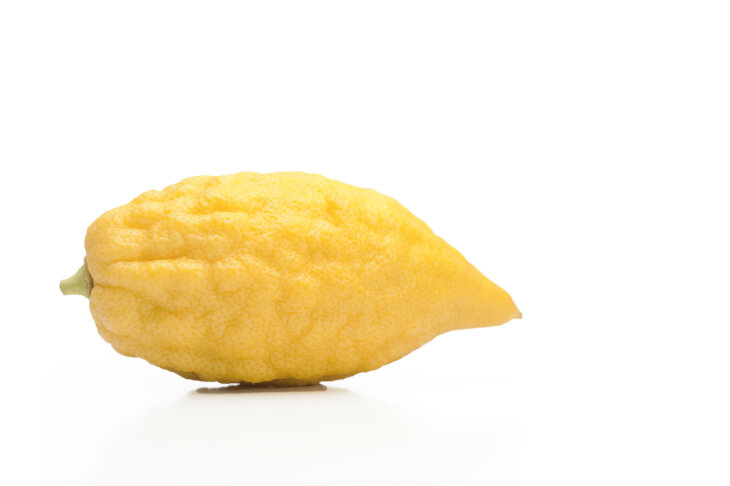
The citron that’s used as part of the four species.

The branch of a myrtle plant, with its unique triple leaves encircling the stem, that’s used in the four species on Sukkot. (Haddassim is the plural form of the word.)
Hiddur means “to make beautiful” in Hebrew, and mitzvah means a commandment. In Judaism there’s a deep tradition of not only performing mitzvot (Jewish actions and commandments) but of going the extra mile and making our mitzvot beautiful and glorious. (The Jewish sages expressed this in the Torah: “This is my God and I shall worship Him with beauty” Exodus 15:2).
Hiddur mitzvah is the reason behind the regal silver crowns that adorn many Torah scrolls, the ornate table decorations that some Jewish families use on Shabbat, and the melodious singing that accompany so many Jewish prayers. On Sukkot, Hiddur Mitzvah means that many Jews decorate their sukkahs, adorning these humble outdoor huts with lovely pictures, children’s artwork, flowers, hanging fruit mobiles, or any other decorations.
It’s said that on the final day of Sukkot, Hoshana Rabba, our Divine judgment for the new year - first written on Rosh Hashanah - receives its final seal. In synagogue, all of the Torah scrolls are taken out during the morning service, and it’s customary for all members of the congregation to circle them, reciting a prayer asking for salvation (hoshana means “save” us in Hebrew) and beating bundles of willow branches on the ground, representing averting an evil decree.
Hoshana Rabba is the final day it’s obligatory to eat in the sukkah, and many people prepare an especially festive meal.
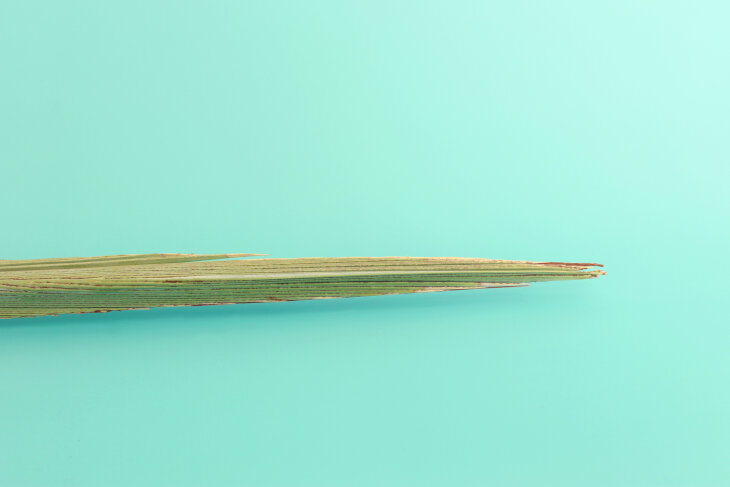
A lulav is the straight frond of a date palm that’s used as part of the four species on Sukkot.

Sukkahs are temporary huts, and they are covered with Schach (literally, a covering or thatch in Hebrew), a temporary roof made of entirely natural plant products. Some people use fresh tree branches as schach on their sukkot; others use bamboo mats that can be rolled up and stored during the rest of the year. The schach covering a sukkah must provide more shade than light to those inside, yet it must be thin enough so that it’s still possible to see the stars from within the sukkah.
In Biblical times, there were three festivals each year during which Jewish families from throughout the Land of Israel and even those living abroad would send representatives to the holy Temple in Jerusalem. “Three pilgrimage festivals shall you celebrate for Me during the year,” the Torah commands (Exodus 23:14). The Hebrew term for these festivals was shalosh (three) regalim (pilgrimages). They were Passover, Shavuot and Sukkot.
This holiday directly follows Sukkot and it’s considered its own separate festival. Shemini means eighth and Atzeret means to refrain. The Talmud explains that as the Jews are preparing to wrap up Sukkot, abandon their sukkahs and head inside - and in ancient times were getting ready to leave Jerusalem at the conclusion of the festival - God longed to spend just a little more time with them. “...the Omnipresent said to them, ‘I request of you, make Me a small repast, in order that I shall derive pleasure from you…’” (see Rashi on Numbers, 29:35).
On Shemini Atzeret many Jews still eat in the sukkah, but they no longer recite a blessing over doing so. Some Jews have the custom of dipping their challah in honey instead of salt starting with Rosh Hashana and continuing all through Sukkot: on Shemini Atzeret, we begin to revert to the usual year’s routine and give up this sweet custom. It’s a way of beginning to ease back into our regular existence after the excitement of the High Holidays and Sukkot.
This holiday is also distinct from Sukkot, but comes fast on its heels. In Israel, Simchat Torah is celebrated on the same day as Shemini Atzeret. In the Diaspora, it’s a separate holiday the day after Shemini Atzeret.
Each year in synagogue on Shabbats as well as Monday and Thursday mornings, Jews read a portion of the Torah out loud. This forms a yearly cycle. Simchat Torah is the holiday where we read the final portion of the Five Books of Moses (the very last section of the Book of Deuteronomy) and then immediately start reading again at the beginning (reciting the opening sections of the Book of Genesis in synagogue). This is accompanied by lots of singing and dancing, as we celebrate our love for the Torah. The fact that we begin reading immediately as soon as we finish the cycle reminds us that we never will take a break from studying the Torah.
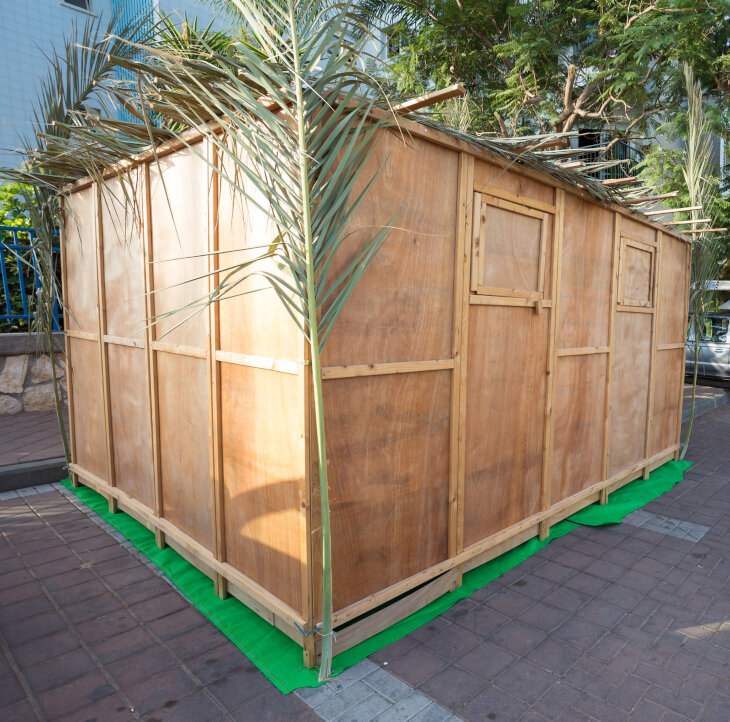
When the weather begins to get chilly, most people start to spend more time indoors. Jews, however, head the opposite way, building temporary booths outside in which to celebrate the holiday of Sukkot. A sukkah is the name of this temporary structure: the plural form of a sukkah is sukkot.
Many rules govern the construction of a sukkah. They are required to have at least two and a half walls at a minimum, and have a roof covered with schach that results in more shade than light inside yet still allows the stars to be visible through the roof. Sukkot must be temporary: a sukkah is only kosher if it doesn’t stay up all year long.
It’s not a requirement to own your own sukkah: many people use communal sukkot or friends’ sukkot during the holiday. Men over the age of 13 are required to eat meals that include bread while sitting inside a sukkah. (That’s the bare minimum: in practice, most Jewish families make every effort to eat their meals - or at least most of their meals - inside a sukkah.) The blessing that we say inside the sukkah doesn’t refer to meals:
Blessed are You, Lord our God, King of the Universe, Who has Commanded us to sit inside the sukkah.
Simply sitting inside a sukkah - relaxing and spending time with friends or even all alone - is a key part of enjoying this holiday. Some people even sleep in their sukkot. While it’s not required to sit inside a sukkah if the weather is raining or unpleasant, sitting inside sukkot - dwelling in them a bit like our ancestors did after they left Egypt - is a key part of celebrating Sukkot.
Literally “booths,” Sukkot is the name of this magnificent week long (or eight day long in the Diaspora) festival. Some people say the name of this holiday using Ashkenazi Yiddish pronunciation, Sukkos.
Each night of Sukkot, its customary to invite guests - real and imagined - to eat with us. The name for these special Sukkot guests, Ushpizin, comes from Aramaic, the language of the Talmud. In Jewish mystical thought, eating in the sukkah is considered so holy that we are spiritually privileged to “host” different figures from Jewish history. On the first night, it’s customary to symbolically welcome Abraham. On the second night, his son Isaac. On the third night, Isaac’s son Jacob. On the fourth night, Moses. On the fifth, Moses’ brother Aaron. On the sixth day, we welcome Joseph and on the seventh, we welcome King David. (Some communities have a slightly different order and some perform even more ritual, leaving an ornate chair free for these Ushpizin.)
We also welcome flesh and blood guests on Sukkot. This is a mitzvah that’s incumbent on Jews all year round: hachnasat orchim is a fundamental Jewish mitzvah of offering hospitality to guests. On Sukkot, it’s traditional to perform this mitzvah with alacrity, inviting guests - including the poor and needy - into our sukkot, and also giving charity to help celebrate the holiday, not only with the bare necessities, but with delicacies and delicious foods and wine.
May this Sukkot truly be a festival of joy to you and your family. Chag sameach!
Featured Image: Sukkot, by Yoram Raanan. Visit his breathtaking work here.
